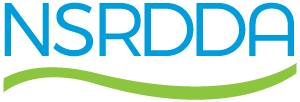Standard of Practice for the Use of Cone Beam Computed Tomography (CBCT) in Dental Practice
Dental cone beam computed tomography (CBCT) scanners are a significant addition to the imaging armamentarium available for the investigation of dental patients. CBCT technology is constantly improving and, as a result, there is much interest on the part of dentists to take advantage of this imaging modality for the diagnosis and treatment of their patients.
However, like conventional dental radiography, dental CBCT scanners utilize ionizing radiation, which can increase an individual’s lifetime risk of developing cancer. This risk rises with cumulative dose; it is greater for children than adults and greater for females than males. As with all dental procedures, the small risk associated with the taking of a dental CBCT scan must be weighed against its potential benefits.
Dental CBCT scanners can provide excellent 3-dimensional diagnostic images of hard tissues with much lower radiation doses than conventional, medical multi-slice CT scanners of the same area. X ray dose for some tasks may be higher than conventional intraoral and panoramic techniques. Doses are dependent on equipment types and exposure settings, and the field of view selected.
As with all dental-imaging technology involving ionizing radiation, the principle of ALARA (As Low As Reasonably Achievable) should be foremost when considering the use of dental CBCT scanners. Dental CBCT scanners must be utilized in a responsible way that maximizes diagnostic value given the clinical context, but without exposing patients to unnecessary amounts of ionizing radiation. This requires the clinician to exercise professional judgment to achieve the appropriate balance between these two considerations.
The Standard is applicable to all dentists and dental specialists* in Nova Scotia who wish to operate a dental CBCT scanner for the purpose of imaging dental patients, as well as those who wish to prescribe dental CBCT scans for diagnostic purposes.
Dentists wishing to prescribe, take, or interpret CBCT scans must fulfill the educational requirements in the Standard, submit verification to the PDBNS, and obtain authorization which will be displayed on the public directory. Dentists should submit verification of their education in CBCT to PERMITS@NSRDDA.CA.
*Note: By virtue of their training, oral and maxillofacial radiologists and oral and maxillofacial surgeons licensed to practice in Nova Scotia are exempt from having to complete the additional training described in this standard.
Course:
September 2023
University of Alberta
Cone Beam CT (CBCT) Certification Program – University of Alberta (ualberta.ca)
This course is available online via U of A’s eClass, and is in a self-paced, self-study format (no in-person attendance required). Following completion of the online eClass, this course culminates with a live, synchronous online session for participant Case Presentations (dates and times TBA closer to the session).
Small Volume CBCT Interpretation – Speaker: Dr. Ernest Lam
November 18-19, 2023 – This small field-of-view cone beam CT (CBCT) course has both didactic and clinical “hands-on” components that will introduce the clinician to the principles of CBCT and its applications in dentistry. Course content will be consistent with RCDSO and ODQ education guidelines for the operation of CBCT systems and meets the PDBNS’ requirements.
Contact Tammy Colter @ tcolter@citadeloralsurgery.ca
